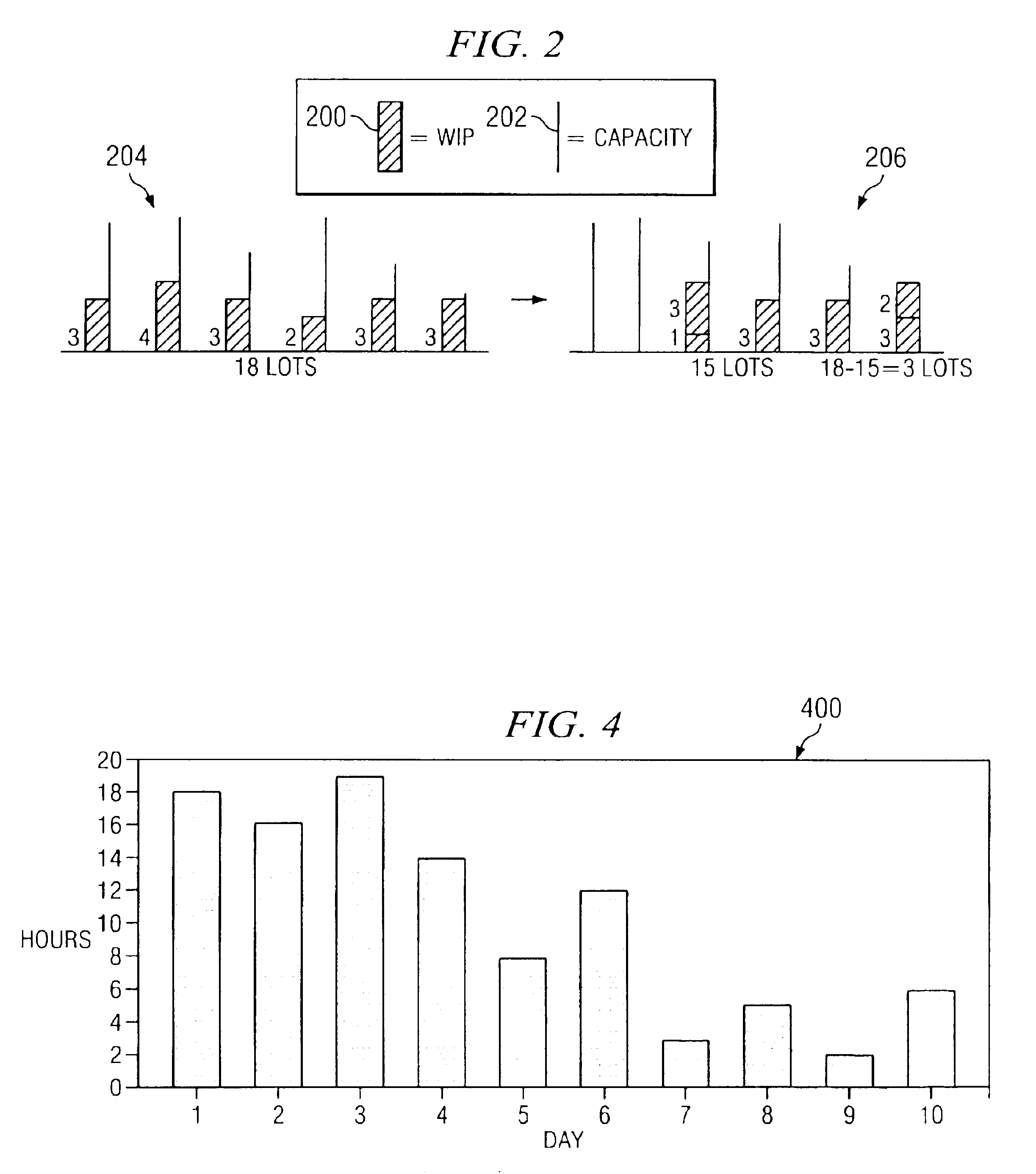Balancing work release based on both demand and supply variables
a work release and demand technology, applied in the field of balancing work release, can solve the problems of not considering plant conditions, affecting control functions, and overloading the manufacturing plant with work, so as to reduce the cycle time of the manufacturing facility and increase customer satisfaction
- Summary
- Abstract
- Description
- Claims
- Application Information
AI Technical Summary
Benefits of technology
Problems solved by technology
Method used
Image
Examples
Embodiment Construction
[0023]The making and using of the presently preferred embodiments are discussed in detail below. It should be appreciated, however, that the present invention provides many applicable inventive concepts that can be embodied in a wide variety of specific contexts. The specific embodiments discussed are merely illustrative of specific ways to make and use the invention, and do not limit the scope of the invention.
[0024]The present invention will be described with respect to preferred embodiments in a specific context, namely a wafer start policy in a semiconductor fab producing integrated circuits. The invention may also be applied, however, to other manufacturing systems generating other products. In particular, manufacturing lines that operate on a multiple products at the same time, and with variable processing at work centers in the line, should benefit from the balanced work release system and method disclosed herein.
[0025]In a preferred embodiment, a procedure for generating a w...
PUM
 Login to View More
Login to View More Abstract
Description
Claims
Application Information
 Login to View More
Login to View More - R&D
- Intellectual Property
- Life Sciences
- Materials
- Tech Scout
- Unparalleled Data Quality
- Higher Quality Content
- 60% Fewer Hallucinations
Browse by: Latest US Patents, China's latest patents, Technical Efficacy Thesaurus, Application Domain, Technology Topic, Popular Technical Reports.
© 2025 PatSnap. All rights reserved.Legal|Privacy policy|Modern Slavery Act Transparency Statement|Sitemap|About US| Contact US: help@patsnap.com



